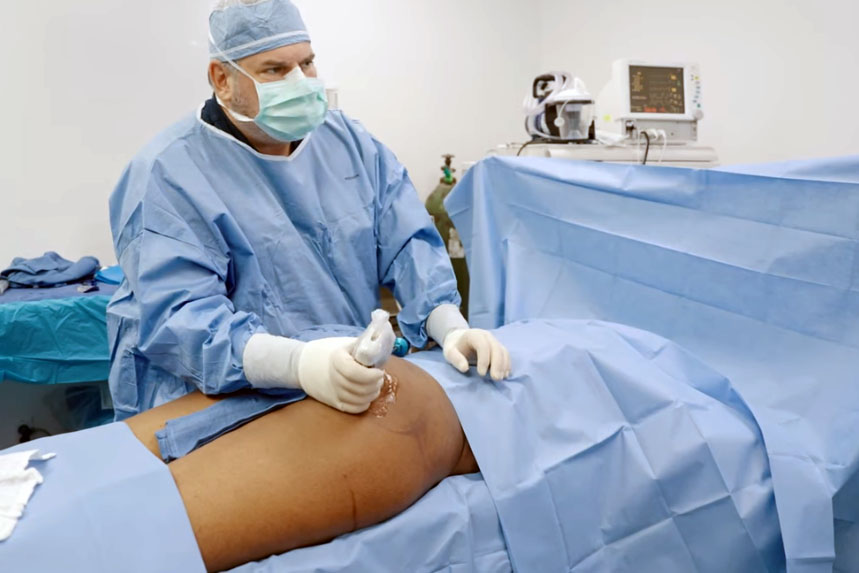Have you ever heard of a dual plane BBL? Probably not, but it’s truly cutting-edge BBL information and the ideal method to safely get the best results.
As you know, I’m keen on ensuring patients understand the entire process before undergoing any operation, no matter the surgery. Making sure you know possible complications and what to look for allows you to be your biggest safety advocate.
Dual Plane BBL
In the past, particularly in Florida, we did BBLs a lot differently than we do today, and while projection results were far better than other methods, the risks were far too high.
Suppose a patient is lying on their stomach on an operating room table. Looking from where their stomach is flat on the table to the highest point of their butt from the table, we have several layers of fat, fascia, and muscle.
From the top down skin, subcutaneous fat, superficial fascia, more fat, deep fascia, and finally, the glute muscle.
In the past, we injected fat below the muscle, in the muscle, and above the muscle, and there are a few reasons why. First, the muscle has a rich blood supply, meaning new fat could thrive and grow. Secondly, by injecting deeper, far past the soft tissue closest to the skin, which doesn’t expand much, we got better projection and avoided flatness. However, while the blood supply and projection were good, many people died from this practice.
Below and in the gluteal muscle are large veins that get smaller as they travel up through the muscle. These veins are obviously why the blood supply is so plentiful in that area; however, while injecting, sometimes plastic surgeons would hit those veins and inject into them – this can cause a complication called fat embolism, which can be fatal. Fat embolism happens when fat particles enter your bloodstream and block blood flow to vital organs.
Understand there had to be a better way, plastic surgeons began doing BBLs on what I like to call a dual plane. We inject in two locations.
Now, we don’t inject in or below the muscle. Instead, we lean on the body’s fascia – the tight, strong material that provides a supportive network for our body.
Through the dual method – we use an ultrasound to guide us. We know we can avoid increased unnecessary risk by going down only to the deep fascia lining, which borders the glute muscle and is easily visible as a bright line in an ultrasound. This area is safe if the muscle is not penetrated and expands easier than in some areas closer to the skin.
Next, we inject into a higher secondary layer called the superficial layer. This layer is what gives strength to the skin. In this area, we can add even more projection and smooth out imperfections like cellulite or indentions.
As you can see, an ultrasound is vital to BBL surgery. Examining where the planes are can only be done by ultrasound during surgery. If you’re a person considering a BBL, please ensure your plastic surgeon uses this imaging method during your procedure.






